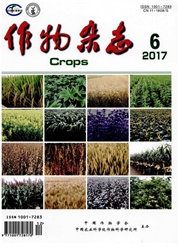

 中文摘要:
中文摘要:
为了阐明紫色土上接种丛枝菌根真菌(arbuscular mycorrhizal fungus,AMF)和不同间作方式对提高间作玉米(Zea mays L.)、大豆(Glycine max L.)的氮素利用和减少土壤氮残留的贡献。本试验在设施盆栽条件下,采用根系分隔模拟装置研究玉米/大豆间作体系中根系不分隔、尼龙网分隔、塑料膜分隔3种方式和不同AMF处理[不接种AMF(NM)、接种Glomus mosseae(GM)]对玉米、大豆植株生长、氮素累积与利用的影响。研究结果表明:接种GM不同程度提高了间作玉米和大豆根系菌根侵染率、株高、植株生物量及氮含量,而显著降低了玉米和大豆种植土壤的碱解氮含量。其中,GM-根系不分隔处理玉米、大豆的菌根侵染率最高。无论是否接种AMF,大豆生物量和植株氮含量均以根系分隔处理显著高于不分隔处理,而玉米生物量和植株氮含量却刚好相反。此外,GM处理条件下,玉米、大豆根际土壤碱解氮含量均以尼龙网分隔和不分隔处理显著低于塑料膜分隔处理。在所有复合处理中,以GM-根系不分隔处理对玉米生长及氮素累积的促进作用最好;GM-尼龙网分隔处理对大豆生长及氮素累积的促进效果最佳,并更能显著降低玉米、大豆根际土壤的碱解氮残留,可望减轻土壤氮流失而降低氮素流失对地表水体的污染风险。
 英文摘要:
英文摘要:
In order to clarify the contribution of improving nitrogen (N) utilization by maize (Zea mays L.) and soybean (Glycine max L.) and reducing N residue in the purple soil with arbuscular mycorrhizal fungus (AMF) inoculation for different maize/soybean intercropping systems, the facility pot experiment was conducted under three kinds of roots separation ways of maize/soybean intercropping system with no separation, nylon net separation, plastic- film separation and different AMF treatments [no AMF (NM), Glomus mosseae (GM) inoculation]. The results showed that GM inoculation promoted AMF infection rate, plant height, shoot and root biomass, N concentration in shoot and root for maize and soybean to a different degree. While GM inoculation significantly decreased available N content in the soil growing with of maizes and soybeans. AMF infection rate with GM-no root separation treatment of maize and soybean were all significantly highest increased. Whether inoculating AMF or not, the plant biomass of and N concentration in soybean under roots separation were significantly higher than no root separation, while plant biomass of and N concentration in maize showed an opposite trend. In addition, under GM treatment, available N content in the soil planting with maize and soybean was significantly lower respectively for nylon net separation and no root separation treatments than plastic-film separation treatment. In conclusion, GM-no root separation treatment was the best one for maize growth and N utilization; and GM-nylon net separation treatment performed best in terms of soybean growth and N utilization and that also significantly reduced the available N residue in the soil growing with maize and soybean, which was expected to reduce the loss of N in the soil and the pollution risk of N loss to surface water.
 同期刊论文项目
同期刊论文项目
 同项目期刊论文
同项目期刊论文
 期刊信息
期刊信息
